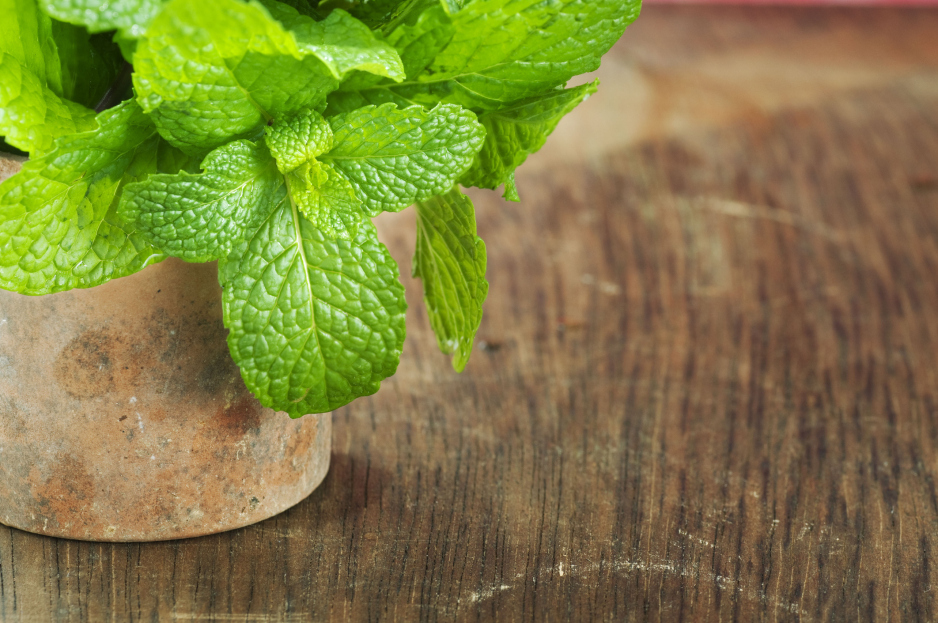
Mint is one of the easiest and most rewarding herbs to grow. Its refreshing aroma and versatile use in both culinary and medicinal applications make it a staple in many gardens and homes. Here's a comprehensive guide to help you successfully grow and maintain a healthy mint plant.
Mint grows best in partial sunlight. Ideally, it should get about 3-4 hours of direct sunlight daily, followed by shade for the rest of the day. If grown indoors, place your plant near a window that receives indirect light. They can also tolerate full sun, but in very hot climates, providing some shade will help prevent it from wilting.
Mint isn’t a heavy feeder, but it benefits from occasional fertilization, especially if grown in containers where nutrients can be depleted faster. Use a balanced, water-soluble fertilizer every 4-6 weeks during the growing season. Organic compost can also be added to the soil in the spring to provide slow-release nutrients.
Mint loves consistently moist soil but doesn’t tolerate soggy conditions. Water your plant whenever the top inch of soil feels dry. In hotter climates or during peak growing season, you may need to water every 1-2 days. Be cautious not to let the soil dry out completely, as this can cause the plant to wilt.
Mint thrives in rich, well-draining soil with a slightly acidic to neutral pH (6.0-7.0). If you’re growing them in a pot, make sure it has good drainage to prevent root rot. Re-pot your plant every 1-2 years, as it can quickly outgrow its container. Spring is the best time to refresh the soil and repot your plant to provide more space for healthy growth.
Mint prefers cool to moderate temperatures, thriving in the range of 55°F to 70°F (13°C to 21°C). It can tolerate cooler conditions but may go dormant in frost. If grown outdoors in colder climates, mulch it to protect the roots during winter.
Mint appreciates moderate humidity levels but can adapt to drier conditions as long as it receives enough water. Indoors, if the air is too dry, misting the plant occasionally will help keep the leaves healthy. In very humid conditions, ensure good air circulation to avoid fungal issues.
Mint is incredibly easy to propagate. The most common methods are stem cuttings and division. For cuttings, snip a healthy stem about 4 inches long and place it in water. After roots form (typically within a week), plant it in soil. You can also divide an established plant by cutting through the root ball and planting the divisions separately.
Mint grows vigorously, so regular pruning is necessary to keep it manageable. Trim back the stems regularly to encourage bushy growth and prevent the plant from getting leggy. You can harvest leaves throughout the growing season, but be sure to prune the entire plant by one-third to one-half at least once during the summer. Also, remove any flower buds to maintain the plant’s flavor.
Mint is generally resistant to pests, but it can occasionally attract aphids, spider mites, and whiteflies. If you notice pests, wash the leaves with a strong stream of water or treat the plant with an insecticidal soap. It is also prone to fungal diseases like rust or powdery mildew in overly wet or humid conditions, so proper watering and air circulation are essential.
Yes! Mint is safe for both cats and dogs. While consuming large amounts of leaves might cause mild digestive upset, it is generally non-toxic. However, keep your pets away from pennyroyal (Mentha pulegium), a type of mint that can be toxic to pets.
Mint prefers partial sunlight, about 3-4 hours of direct light daily.
Water whenever the top inch of soil feels dry. In hot weather, this may be every 1-2 days.
Mint grows well in rich, well-draining soil with a slightly acidic to neutral pH.
Yes, mint grows well indoors with enough indirect sunlight and proper watering.
Mint is easily propagated by stem cuttings or dividing the root ball.
Mint thrives in cool to moderate temperatures, around 55°F to 70°F (13°C to 21°C).
Regularly trim stems to encourage bushy growth and prevent legginess. Prune the plant by one-third to one-half during the growing season.
Mint may attract aphids, spider mites, and whiteflies. Regular inspections and good watering practices can help avoid infestations.
Mint benefits from a balanced fertilizer every 4-6 weeks during the growing season.